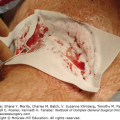Liver Cancer (Hepatocellular)
Irene S. Yu
Ahmed O. Kaseb
Introduction
An estimated 42,230 new cases of liver cancer are diagnosed in the United States annually, with the majority comprised of hepatocellular carcinoma (HCC) cases (1). Five-year overall survival (OS) remains poor at 20% (1). Up until recently, there was a significant unmet need for therapeutic strategies for a disease that was traditionally limited in systemic options, once locoregional treatments have been exhausted. HCC is notably a chemorefractory tumor group and until 2008, there was no standard of care systemic therapy. Historically, systemic chemotherapy regimens included various combinations of gemcitabine, cisplatin, fluoropyrimidine, and/or doxorubicin-based treatments with modest response rates (2,3,4,5). Advances in understanding the mechanisms driving tumorigenesis in HCC as well as progress in drug development have led to multiple approvals for immune checkpoint inhibitors and targeted therapies in recent years, and significant evolution in the treatment landscape of advanced HCC.
Vascular Endothelial Growth Factor Pathway
Sorafenib is an oral multikinase inhibitor that targets intracellular Raf kinases and cell surface kinase receptors including vascular endothelial growth factor receptors (VEGFRs)1, 2, and 3, which are implicated in the pathogenesis of HCC (6,7). The phase III SHARP trial led to the U.S. Food and Drug Administration (FDA) approval of sorafenib, which showed a survival benefit of 2.8 months vs. placebo in patients with advanced HCC who did not receive prior systemic therapy (hazard ratio [HR] 0.69, median OS [mOS] 10.7 vs. 7.9 months) (8). Lenvatinib is another oral multikinase inhibitor; its targets include VEGFR1, 2, and 3, fibroblast growth factor receptors (FGFRs)1, 2, 3, 4, and 5, platelet-derived growth factor receptor (PDGFR)-α, KIT, and RET. Lenvatinib emerged as an alternative first-line therapy as it demonstrated noninferiority to sorafenib in the REFLECT trial (HR 0.92, mOS 13.6 vs. 12.3 months), although ORRs were significantly higher at 24.1% vs. 9.2% favoring lenvatinib (9).
Subsequently, several phase III trials in the second-line setting involving regorafenib, ramucirumab, and cabozantinib showed significant OS benefit compared to best supportive care
or placebo. Regorafenib is an oral multikinase inhibitor against VEGFR1, 2, and 3, KIT, PDGFR-α, PDGFR-β, FGFR1 and 2, among other targets. The RESORCE trial included patients who progressed on sorafenib and excluded those with intolerance; the use of regorafenib was associated with improved OS compared to placebo (HR 0.63, mOS 10.6 vs. 7.8 months) (10). Ramucirumab is an intravenous recombinant monoclonal antibody that specifically inhibits VEGFR2. It was initially studied in the REACH trial, which did not show an OS benefit compared to best supportive care alone in the second-line setting (11). An unplanned subgroup analysis showed that those patients with α-fetoprotein (AFP) levels of ≥400 ng/mL may have derived benefit; thus, the REACH-2 trial was conducted. In patients with elevated AFP levels, ramucirumab was associated with improved survival (HR 0.71, mOS 8.5 vs. 7.3 months) (12). Thus, the approval for ramucirumab is restricted to those with AFP levels of ≥400 ng/ml.
or placebo. Regorafenib is an oral multikinase inhibitor against VEGFR1, 2, and 3, KIT, PDGFR-α, PDGFR-β, FGFR1 and 2, among other targets. The RESORCE trial included patients who progressed on sorafenib and excluded those with intolerance; the use of regorafenib was associated with improved OS compared to placebo (HR 0.63, mOS 10.6 vs. 7.8 months) (10). Ramucirumab is an intravenous recombinant monoclonal antibody that specifically inhibits VEGFR2. It was initially studied in the REACH trial, which did not show an OS benefit compared to best supportive care alone in the second-line setting (11). An unplanned subgroup analysis showed that those patients with α-fetoprotein (AFP) levels of ≥400 ng/mL may have derived benefit; thus, the REACH-2 trial was conducted. In patients with elevated AFP levels, ramucirumab was associated with improved survival (HR 0.71, mOS 8.5 vs. 7.3 months) (12). Thus, the approval for ramucirumab is restricted to those with AFP levels of ≥400 ng/ml.
There have been other agents that have shown promising activity, although not approved in the United States at this time or as a single agent for advanced HCC. Bevacizumab is a recombinant humanized monoclonal antibody against vascular endothelial growth factor (VEGF), which has been shown to have single-agent activity with ORR of 14% in a phase II trial (13). Apatinib is an oral VEGFR2 inhibitor, studied in a phase III study after progression on sorafenib- and oxaliplatin-based chemotherapy. It is associated with OS benefit compared to placebo (HR 0.79, mOS 8.7 vs. 6.8 months) (14). At this time, it is available in China and not in the United States.
MET Overexpression
Cabozantinib was studied in the second-line setting and beyond in the phase III CELESTIAL trial. It is another oral multikinase inhibitor targeting VEGFR1, 2, and 3, but also includes MET, AXL, FLT-3, KIT, RET, and ROS1. In several studies, MET overexpression has been associated with the development of resistance to sorafenib (15,16), thus cabozantinib was studied in the post-sorafenib setting given its activity against MET. Its use was associated with improved OS (HR 0.76, mOS 10.2 vs. 8.0 months) compared to placebo (17) and is indicated as second-line therapy in those previously treated with sorafenib or lenvatinib.
Immune Checkpoint Inhibition
HCC is considered an immunogenic cancer as it often arises from chronic inflammatory conditions (18). As the liver is exposed to many antigens as a part of its normal physiologic function, there is development of intrinsic tolerance in the innate and adaptive immune responses (19). With chronic inflammation, immune suppression contributes to carcinogenesis and thus presents an opportunity for intervention with immunotherapy. There have been ongoing efforts evaluating immune checkpoint inhibitors, initially in the second-line setting and subsequently in the first-line setting both in combination with anti-VEGF therapy or tyrosine kinase inhibitors and as monotherapy.
Nivolumab and Combination Nivolumab/Ipilimumab
CheckMate 040 is a multicohort phase I/II study evaluating the role of nivolumab (PD-1 inhibitor) in advanced HCC. El-Khoueiry et al. evaluated a 3+3 dose escalation cohort followed by an expansion cohort at a dose of 3 mg/kg, in patients with Child Pugh B score of 7 or less (20); ORR was 15% and 20% for the dose escalation and expansion cohorts, respectively. This resulted in the accelerated FDA approval of single-agent nivolumab for the treatment of HCC patients previously treated with sorafenib, but this indication for nivolumab has been withdrawn in 2021, reflecting the results of the CheckMate 459 study. CheckMate 459 was a phase III trial comparing nivolumab and sorafenib in the first-line setting, and did not show a statistically significant OS benefit (HR 0.84, mOS 16.4 vs. 14.7 months) (21).
In a separate cohort of CheckMate 040, Yau et al. randomized patients to three different arms with different dosing of nivolumab and ipilimumab (cytotoxic T-cell lymphocyte antigen-4 [CTLA-4] inhibitor): (i) nivolumab 1 mg/kg + ipilimumab 3 mg/kg every 3 weeks for four doses followed by nivolumab 240 mg every 2 weeks maintenance (arm A), (ii) nivolumab 3 mg/kg + ipilimumab 1 mg/kg every 3 weeks for four doses followed by nivolumab 240 mg every 2 weeks maintenance (arm B), and (iii) nivolumab 3 mg/kg every 2 weeks + ipilimumab 1 mg/kg every 6 weeks ongoing (arm C) (22). Arm A had the highest ORR at 32%, compared to 31% in arm B, and 31% in arm C (23). The arm A combination with nivolumab 1 mg/kg + ipilimumab 3 mg/kg followed by maintenance nivolumab was approved by the FDA in 2020, for those patients previously treated with sorafenib.
Stay updated, free articles. Join our Telegram channel

Full access? Get Clinical Tree





